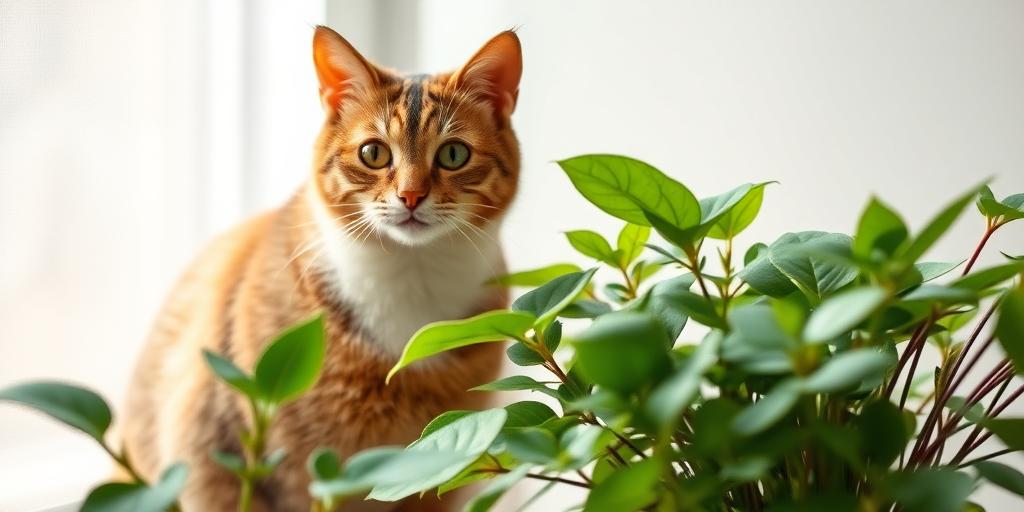
Easy Cat-Friendly Plants for Low Light: Safe and Stylish Choices
Looking for cat-friendly plants that thrive in low light? Discover the best non-toxic, easy-care plants perfect for your home and safe for your feline friends!
Introduction
Did you know that over 30% of houseplants are toxic to cats? If you’re a plant-loving pet owner, finding the right greenery for your space can be tricky—especially in low-light areas. But don’t worry! We’ve rounded up the best cat-friendly plants that thrive in low light, so you can create a lush, pet-safe indoor jungle. Whether you’re a beginner or a seasoned plant parent, these picks are easy to care for and perfect for dim corners. Let’s dive in!
Why Choose Cat-Friendly Plants for Low Light?
The Dangers of Toxic Plants for Cats
Many common houseplants can be harmful—or even deadly—to cats. Lilies, for example, can cause kidney failure, while plants like pothos and philodendrons can lead to oral irritation, vomiting, and difficulty swallowing. Symptoms of poisoning may include drooling, lethargy, loss of appetite, or even seizures. Since cats are naturally curious and love to nibble on greenery, choosing non-toxic plants is a must for pet owners.
Benefits of Low-Light Plants
Not only are cat-friendly plants safer, but low-light varieties are also incredibly practical. They thrive in spaces with minimal sunlight, making them perfect for apartments or rooms with few windows. Plus, they’re generally low-maintenance—ideal for busy pet parents who don’t want to stress over finicky plants.
Balancing Aesthetics and Pet Safety
You don’t have to sacrifice style for safety! Many pet-safe plants are visually striking, from the patterned leaves of Calatheas to the cascading fronds of Boston Ferns. By selecting the right plants, you can create a beautiful, pet-friendly space that both you and your cat will love.
Top 10 Easy Cat-Friendly Plants for Low Light
Spider Plant
A classic choice for pet owners, spider plants are non-toxic and excellent air purifiers. They thrive in indirect light and produce baby offshoots (or “spiderettes”) that you can propagate—great for sharing with fellow plant-loving friends.
Boston Fern
With its lush, feathery fronds, the Boston Fern adds a touch of greenery to any space. It’s safe for cats and does well in hanging baskets, keeping it out of curious paws’ reach. Just make sure to keep the soil consistently moist.
Parlor Palm
This elegant palm is not only pet-safe but also incredibly adaptable to low-light conditions. It grows slowly, making it perfect for smaller spaces, and adds a tropical vibe to your home.
Peperomia
Compact and versatile, Peperomia comes in many varieties, from ripple-textured leaves to watermelon-like patterns. They’re low-maintenance and thrive in moderate to low light, making them a great choice for shelves or desks.
Cast Iron Plant
True to its name, the Cast Iron Plant is nearly indestructible. It tolerates neglect, low light, and even occasional nibbling from cats. Its deep green leaves add a bold, architectural element to any room.
Calathea (Prayer Plant)
Known for its striking foliage, the Calathea is a showstopper that’s safe for cats. Its leaves move throughout the day (hence the nickname “Prayer Plant”), adding dynamic interest to your space.
Haworthia (Zebra Plant)
If you love succulents but worry about toxicity, Haworthia is a fantastic option. This small, spiky plant thrives in low light and requires minimal watering—just keep it out of direct sunlight to prevent scorching.
Bromeliads
For a pop of tropical color, Bromeliads are a great pick. Their vibrant blooms and pet-safe nature make them a stylish addition to any room. They prefer bright, indirect light but can tolerate lower light conditions.
African Violet
These charming flowering plants add a splash of color without needing direct sunlight. They’re non-toxic to cats and thrive in consistent, moderate light—perfect for brightening up a dim corner.
Friendship Plant (Pilea)
The Friendship Plant is not only safe for cats but also incredibly easy to propagate. Its textured, coin-shaped leaves make it a unique addition to your plant collection, and it does well in moderate to low light.
How to Care for Low-Light Cat-Friendly Plants
Watering Tips
Overwatering is a common killer of houseplants. Always check the soil moisture before watering—stick your finger about an inch deep. If it’s dry, it’s time to water. Most low-light plants prefer slightly moist soil but can suffer if left sitting in water.
Best Soil Types
Well-draining soil is key for preventing root rot. A mix of potting soil with perlite or orchid bark works well for most low-light plants. Avoid heavy garden soil, which can retain too much moisture.
Signs Your Plant Needs More (or Less) Light
If your plant’s leaves are yellowing or dropping, it might be getting too much or too little light. Leggy growth (long stems with sparse leaves) usually indicates insufficient light, while scorched leaves suggest too much direct sun.
Fertilizing Do’s and Don’ts
Low-light plants grow slower, so they need less fertilizer. A diluted, balanced fertilizer every 4-6 weeks during the growing season (spring and summer) is usually enough. Avoid over-fertilizing, which can lead to salt buildup in the soil.
Common Mistakes to Avoid with Pet-Safe Plants
Overlooking Hidden Toxins
Even if a plant is non-toxic, soil additives, pesticides, or fertilizers could still harm your cat. Always opt for organic, pet-safe soil and avoid chemical treatments.
Placing Plants in Complete Darkness
While low-light plants tolerate dim conditions, they still need some light to survive. A completely dark corner will lead to weak, unhealthy growth. Try placing them near a north-facing window or in a well-lit room away from direct sun.
Forgetting to Cat-Proof Heavy Pots or Hanging Planters
Cats love to climb and explore, so ensure heavy pots are stable and hanging planters are securely fastened. A toppling planter could injure your pet—or your floors!
Styling Tips: Decorating with Cat-Friendly Plants
Using Shelves and Hanging Planters
Elevate plants out of reach by placing them on high shelves or in hanging baskets. Macramé hangers or wall-mounted planters can add a stylish touch while keeping greenery away from curious kitties.
Creating a Cat-Friendly Indoor Garden Corner
Designate a small area where your cat can safely interact with plants. Include cat grass or catnip in pots to satisfy their chewing instincts while protecting your other houseplants.
Pairing Plants with Pet-Safe Decorative Elements
Enhance your plant display with pet-friendly decor like wooden stands, ceramic pots, or woven baskets. Avoid small, chewable decorations that could pose a choking hazard.
By choosing the right plants and styling them thoughtfully, you can create a lush, pet-safe oasis that both you and your feline friend will enjoy!
Conclusion
Finding the perfect cat-friendly plants for low light doesn’t have to be hard! With options like Spider Plants, Boston Ferns, and Parlor Palms, you can enjoy a green home without risking your cat’s health. Remember to monitor your plants and keep them in the right conditions for long-lasting beauty. Ready to transform your space? Start with one of these easy-care picks today!
